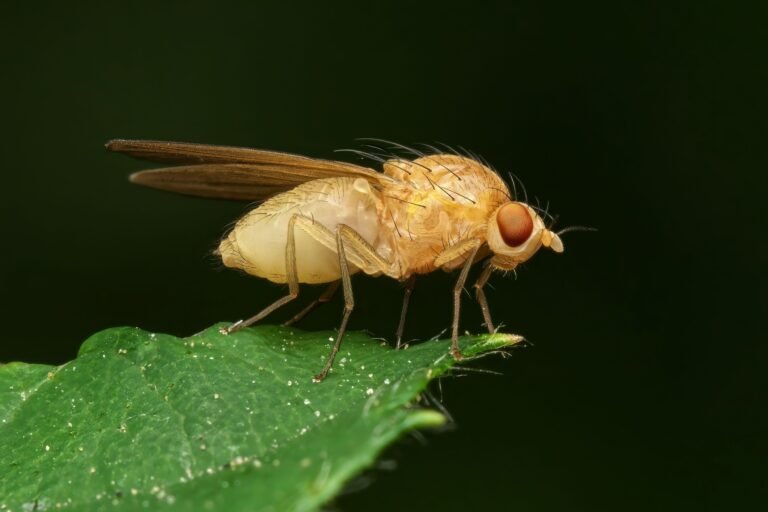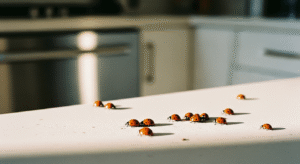Fruit flies are small insects commonly found around overripe fruits and vegetables. Despite their frequent presence near food storage areas, there is much confusion about whether fruit flies bite humans and how their biology influences interactions. This article provides concise insights into fruit flybiology, the risks of bites and related symptoms, management strategies for infestations, their ecological roles, and guidelines to differentiate fruit flies from similar insects.
In the following sections, we cover the lifecycle and behavior of fruit flies, evaluate the potential dangers of their bites, describe common symptoms following contact, outline practical pest management in homes, examine their ecological contributions, and explain how to distinguish these pests from other flies.
Understanding the Biology of Fruit Flies and Their Behavior
Fruit flies, especially Drosophila melanogaster, are widely used in genetic research because of their rapid life cycle—egg, larva, pupa, and adult stages occur within one to two weeks at room temperature. Their behavior is driven by the detection of fermenting fruits and vegetables that emit ethanol and other byproducts. Their well-mapped genome and short lifespan have made them a model organism in studies of genetic recombination, protein functions, and even sexual dimorphism, with landmark research initiated by Thomas Hunt Morgan.
Learn About the Life Cycle Stages of Fruit Flies and Their Habits
Fruit fly reproduction is swift. Females lay eggs on decaying organic matter, and the resulting larvae feed on microorganisms and sugars until they pupate and emerge as adults. Their rapid breeding and sensitivity to environmental factors such as humidity and temperature make them important not only for laboratory studies on mutation and allele distribution but also for developing integrated pest management (IPM) strategies that target larval feeding sites to prevent infestations.
Identify Common Species of Fruit Flies and Their Characteristics
Drosophila melanogaster, noted for its small size (about 3 mm), red eyes, and patterned abdomen, is the most studied species. Other species, like Drosophila simulans, share similarities but differ in reproductive behavior and environmental sensitivity. Their rapid reproduction and role in organic decomposition, along with studies on sex linkage and chromosomebehavior, underline their importance both scientifically and in understanding household infestations.
Examine the Sensory Perceptions Fruit Flies Use to Locate Food
Fruit flies have highly developed sensory organs. Their antennae and maxillary palps contain olfactory receptors that detect ethanol, acetic acid, and other esters from fermenting produce. Combined with visual cues like contrasting colors and light wavelengths, these senses guide them to food sources such as open refrigerators, sinks, and fruit bowls. This knowledge is used to design effective traps and deterrents that mimic their natural attractants.
Recognize Environmental Factors Influencing Fruit Fly Behavior
Environmental conditions are key drivers of fruit flybehavior. Warm, humid settings accelerate their life cycles and promote infestation, while factors like light and availability of decaying organic material create ideal breeding sites. Even household factors such as a poorly maintained refrigerator or dirty sink can enhance attraction. Understanding these relationships supports practical IPM approaches including improved storage and sanitation.
Discover the Mating Rituals of Fruit Flies in Their Habitat
Fruit flymating involves elaborate courtship behaviors. Males perform wing vibrations, chase females, and secrete pheromones to signal genetic fitness. These interactions not only ensure rapid population growth but also influence genetic traits and sexual dimorphism. Recognizing these behaviors helps researchers and pest managers understand reproduction dynamics and devise strategies to disrupt the breeding cycle.
Assessing the Risks Associated With Fruit Fly Bites
Although fruit flies are a common household nuisance, most species cannot bite humans due to their mouthparts, which are adapted for feeding on liquids. Their primary risk lies in contaminating food surfaces rather than causing direct injury. However, understanding potential allergic reactions and secondary contamination risks is essential for individuals with sensitive immune systems and for developing proper IPM measures.
Analyze the Potential Harm Fruit Flies May Cause to Humans
Fruit flies have adapted mouthparts that pierce soft, decaying matter rather than human skin. Documented cases of actual bites are extremely rare. Their presence can lead to secondary contamination by transferring bacteria from unsanitary environments, though their role in disease transmission is minimal compared to insects like houseflies.
Investigate Allergic Reactions Linked to Fruit Fly Interactions
Even without biting, fruit fly interactions might trigger mild allergic reactions. Exposure to trace amounts of saliva or contaminants can cause localized redness, itching, or slight swelling. For most people, such symptoms resolve with minimal treatment; however, those with pre-existing conditions may need to manage repeated exposures through robust preventive hygiene practices.
Understand Fruit Fly Saliva and Its Effects on the Skin
Fruit fly saliva contains enzymes that help break down organic material. In the rare event that these enzymes contact human skin, they might cause a mild inflammatory response. Studies indicate that the enzymes do little harm due to the skin’s protective barrier, but sensitive individuals might experience temporary irritation that can be managed with prompt cleaning.
Evaluate the Likelihood of Fruit Fly Bites in Daily Life
Scientific observations show that fruit flies are primarily scavengers. They rarely cause bites because their feeding mechanism is designed for absorbing liquids from decaying matter. Although they may land on human skin, structural limitations prevent them from biting effectively. Thus, while they may cause minor irritations, actual harmful bites remain exceptionally uncommon.
Identify Preventative Measures to Avoid Fruit Fly Bites
To minimize potential interactions, basic sanitation measures are key. Storing produce in sealed containers or refrigerators, cleaning surfaces regularly, and promptly discarding overripe or damaged fruit can significantly reduce infestations. Additionally, employing natural repellents like essential oils and setting DIY traps using apple cider vinegar help deter fruit flies and lower the risk of incidental contact.
Identifying Symptoms After a Fruit Fly Interaction
While fruit flies rarely bite, contact may sometimes lead to minor skin symptoms in sensitive individuals. Recognizing these early symptoms helps ensure that proper hygiene or medical attention prevents escalation.
Observe Common Symptoms Following a Fruit Fly Encounter
Common symptoms include mild redness, itching, and slight swelling localized to the contact area. These effects typically last for a few hours to a couple of days. In most cases, these brief reactions result from the immune system’s response to proteins in fruit fly residues rather than a direct bite.
Recognize Signs of Irritation or Allergic Response
It is important to monitor for signs like itching, red spots, or a burning sensation—especially if these symptoms extend beyond the immediate contact area. Although severe reactions are extremely rare, early intervention with topical creams or antihistamines can prevent escalation in particularly sensitive individuals.
Track the Timeline of Symptoms After Being Bitten
Typically, symptoms appear within minutes and reach peak intensity within a few hours before gradually subsiding within one or two days. Persistent symptoms beyond 48 hours should be observed carefully and may warrant a consultation with a healthcare provider.
Determine When to Seek Medical Attention for Bites
If symptoms such as severe swelling, extensive rash, or signs of systemic allergic reaction (e.g., difficulty breathing) occur, immediate medical attention is recommended. Though most reactions are mild, individuals with compromised immune systems should remain vigilant.
Record Any Unusual Reactions and Their Severity
Keeping a detailed record of any unusual or severe reactions can assist in personal health management and guide future preventive measures. Document details such as the affected area, duration, and intensity of symptoms for better-informed care decisions.
Tips for Managing Fruit Fly Populations in Your Home
Effective management of fruit fly infestations involves a combination of sanitation and targeted interventions that disrupt their breeding and food attraction processes. Consistent cleaning and proactive environmental management can make households less inviting to these pests.
Implement Effective Cleaning Practices to Eliminate Attractants
Frequent cleaning of kitchen surfaces, particularly around sinks, countertops, and garbage disposals, is essential. Removing food remnants and sanitizing sponges, sink drains, and recycling bins significantly reduces organic residues that attract fruit flies. Sealing food storage areas further minimizes available attractants.
Construct DIY Traps to Reduce Fruit Fly Numbers Indoors
Simple DIY traps can be highly effective. A container with apple cider vinegar mixed with a few drops of dish soap attracts and traps fruit flies. Inserting a paperfunnel into a jar with the bait solution enhances the trap’s efficiency. Placing multiple traps near common food sources, such as fruit bowls and trash bins, can help reduce infestation levels.
Use Natural Repellents to Deter Fruit Flies Effectively
Natural repellents—such as diluted essential oils of peppermint, eucalyptus, or lemongrass—can discourage fruit flies without harmful chemicals. Spraying these oils on food preparation areas and placing sachets of dried herbs like basil or bay leaves can create barriers that interfere with the flies’ olfactory cues.
Seal Entry Points to Prevent Fruit Flies From Entering
Preventing fruit flies from entering indoors is as important as controlling those already inside. Sealing gaps in window screens, door frames, and other openings using weather stripping or caulking helps block external entry points. Routine inspection of potential gaps around vents or pipes is recommended to maintain a secure barrier.
Monitor Food Storage Methods to Keep Flies Away
Proper food storage plays a pivotal role in pest management. Keeping overripe fruits in airtight containers or refrigerators, and disposing of food waste in sealed bags, limits the available breeding substrates for fruit flies. Regular checks under appliances or near sinks help ensure that spills or residues do not create additional attractants.
Exploring the Ecological Role of Fruit Flies
Beyond household nuisances, fruit flies contribute to natural ecosystems. They play vital roles in nutrient recycling, act as minor pollinators, and serve as food for various predators, highlighting that they are part of a larger, balanced ecological network.
Understand the Contribution of Fruit Flies to Ecosystems
Fruit flies help decompose fermenting organic matter, releasing nutrients that support soil health and plant growth. Their role as decomposers supports nutrient cycling and promotes biodiversity by feeding predators such as spiders and small birds.
Investigate How Fruit Flies Assist in Pollination
While not as efficient as bees, fruit flies contribute to incidental pollination when they visit flowers in search of nectar. This sporadic pollination can help maintain plant communities, especially in ecosystems where traditional pollinators are scarce, thereby supporting overall biodiversity.
Examine Fruit Fly Interactions With Other Species
Fruit flies are an important food source for predators including spiders, wasps, and birds. These interactions help regulate fruit fly populations naturally and support integrated pest management in both urban and rural environments.
Assess the Impact of Fruit Flies on Fruit Production
In agricultural settings, heavy fruit fly infestations can damage crops by causing direct decay and creating conditions favorable for secondary infections. However, controlled populations also contribute to the natural breakdown of overripe produce, balancing the benefits of decomposition with crop protection. Integrated pest management practices in commercial agriculture thus focus on keeping fruit fly numbers at manageable levels.
Recognize Their Role in Nutrient Recycling in Soil
By feeding on decaying fruit and vegetation, fruit flies expedite nutrient recycling. This process enriches soil with essential elements such as nitrogen, phosphorus, and potassium, supporting planthealth and fostering a robust microbial ecosystem.
How to Differentiating Between Fruit Flies and Other Flies
Accurate identification is crucial for choosing appropriate control measures. Fruit flies differ from similar insects like common houseflies in both physical features and behavior.
Identify Physical Characteristics of Fruit Flies
Fruit flies (e.g., Drosophila melanogaster) are small—2 to 4 mm long—with large red compound eyes, a tan or yellowish thorax, and a distinctive striped abdomen. Their clear wings with subtle venation set them apart from larger, darker, and more robust common houseflies.
Compare Fruit Flies With Common Housefly Features
Houseflies are typically larger (around 6 to 7 mm), with a sturdier build and gray or black coloration. Their feeding behavior is more generalized, as they are attracted to a wider range of decaying matter, unlike fruit flies which specifically target fermenting, sugary substances. These differences inform the distinct pest management approaches required for each insect.
Recognize Behaviors That Distinguish Fruit Flies
Fruit flies demonstrate specialized behaviors such as consistent chemotaxis toward fermentation odors and defined mating rituals involving pheromone signals. In contrast, houseflies have a less specialized flight and feeding pattern. Observing these behaviors aids in correct identification.
Utilize Visual Guides for Identifying Fly Species
Comparative visual guides and dichotomous keys that highlight differences in size, wing structures, and body coloration are valuable tools. Digital databases and photographic resources further support non-experts in distinguishing fruit flies from other similar insects.
Understand the Significance of Correct Identification
Proper identification is essential because misidentification can lead to ineffective control measures. In agriculture and research alike, distinguishing fruit flies from houseflies ensures that targeted and cost-effective pest management strategies are implemented while preserving ecological balance.
Frequently Asked Questions
Q: Do fruit flies actually bite humans? A: Fruit flies cannot bite humans due to their specialized mouthparts meant for feeding on liquids. They typically land on surfaces in search of fermenting food rather than piercing the skin, resulting in only minor irritation if any.
Q: Can fruit flysaliva cause allergic reactions? A: Although their saliva contains enzymes that break down organic matter, it rarely causes severe allergic reactions. In sensitive individuals, contact may provoke mild redness or itching, which usually resolves with simple home remedies.
Q: What are the primary factors that attract fruit flies indoors? A: Fruit flies are attracted to fermenting organic matter like overripe fruits and spilled beverages. Warmth, humidity, and unsanitary conditions further increase their likelihood of infesting indoor spaces.
Q: How can I effectively manage fruit flypopulations at home? A: Effective management involves thorough cleaning, proper food storage, sealing entry points, and using DIY traps with natural baits such as apple cider vinegar. Natural repellents and regular disposal of waste are also key preventive measures.
Q: Are fruit flies beneficial in any way to the ecosystem? A: Yes, fruit flies contribute to nutrient recycling by decomposing organic matter, provide incidental pollination, and serve as a food source for predators. They play an important role in maintaining ecological balance.
Q: When should I seek professional help for a fruit flyinfestation? A: If DIY measures and regular cleaning fail to control a significant infestation or if food contamination issues persist, it is advisable to consult a professional pest management service—especially in commercial settings.
Q: How long do symptoms typically last after a fruit flyencounter? A: Mild symptoms such as redness or itchiness usually appear within minutes, peak within a few hours, and resolve within one to two days. Persistent or severe reactions should be evaluated by a healthcare professional.
Final Thoughts
Fruit flies pose a minimal direct threat to human health due to their feeding mechanisms but can be a nuisance by contaminating food and triggering minor allergic reactions. Their rapid life cycle, role in genetic studies, and ecological contributions underscore the importance of balanced management strategies. By maintaining good sanitation practices, using effective DIY traps, and properly sealing entry points, households can manage infestations without relying heavily on chemical insecticides. A clear understanding of fruit flybiology and identification is key to implementing informed, eco-friendly pest control measures.




